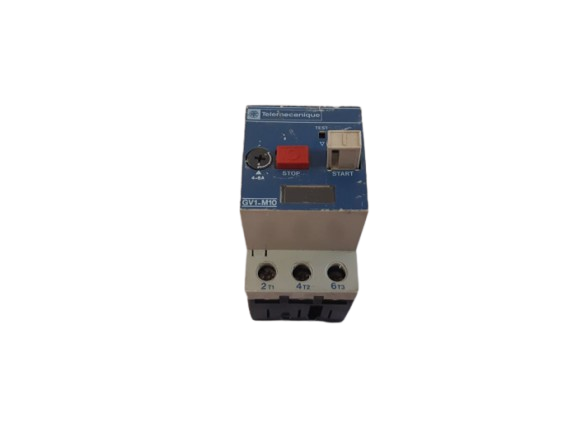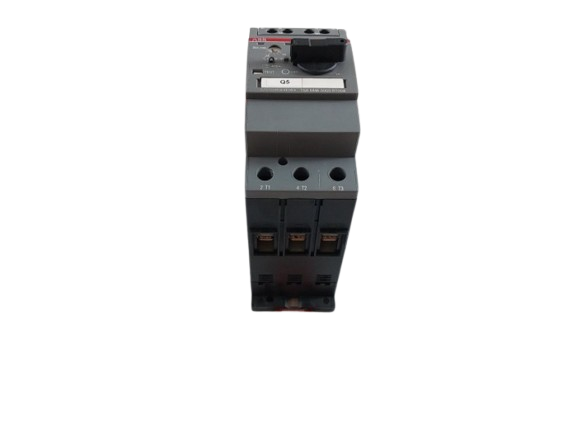Motor starters are the most important parts for effective smoothening and efficient running of industrial automation . These ensure safety and efficient running with minimum downtime of electric motors. In 2024, demand for motor starters is continuously increasing as firms prioritize energy efficiency and cut down on downtime. On this blog, we'll explore effects of motor starters on industrial automation, explore the various types of motor starters that exist, and see how they enhance efficiency in energy use, starting of motors, and general automation.
What is Motor Starters?

A motor starter is an electromechanical device designed to start and stop electric motors safely. It regulates power flow to the motor, bringing it from a standstill to its full operational speed with protection against overloads and short circuits. Motor starters are part of a basic component in industrial automation in which motors are used to power conveyor belts, compressors, and so on.
Types of Motor Starters
There are a number of types of motor starters available for use in industrial automation. Each will be designed for specific applications and for specific types of motors. Therefore, knowing the various types of motor starters would help to assure that the best choice is made for a given system.
- Direct-On-Line (DOL) Starter: The most simple type of starter is the DOL starter because in this starter, the full voltage is applied directly to the motor terminals. DOL starters have fewer applications due to their use for small motors and large current surges at start time.
- Star-Delta Starter: This is used for big motors. It decreases the onset voltage offered at the time of starting motor, and thus, inrush currents are reduced, and hence, motor is avoided from any kind of damage. These are also most in demand in high-power application like compressors as well as conveyor systems, etc.
- Soft Starter: Soft starters typically start with an escalating voltage. Inrush current while starting as well as torque decrease with it, that in turn decreases the mechanical stresses both on the motor as well as equipment connected.
- Variable Frequency Drive (VFD): The output of the VFDs varies by frequency and voltage, thereby ensuring accurate control of motor speed. In fact, these starters can find particular use in applications that require variable speeds-for instance, fans, pumps, and conveyors.
How Motor Starters Enhance Energy Efficiency in Industrial Automation
Energy efficiency is one of the more common applications of motor starters in industrial automation. Industrial motors are major consumers of industrial energy. The efficiency of the motor starters can improve suboptimal motor performance to save energy when needed, helping businesses reach their goals regarding energy efficiency and bringing down the operation costs.
Reducing Energy Consumption with Soft Starters and VFDs
Soft starters and VFDs are especially valuable in applications for energy efficiency improvement. Unlike DOL starters, which apply full voltage at the moment of starting, soft starters gradually increase the voltage applied to the motor for startup, thereby reducing inrush current and preventing unnecessary energy waste in these situations. As such, VFD motor starting allows for a far more precise level of control over the motor speed, which can be set to match the load, resulting in substantially reduced energy usage.
In industries where motors are always running at full speed even when inefficient, the VFD would make tremendous saving as it allows the motor to run at a mere speed required for a task. This is particularly more beneficial in the food and beverages sector where there are products with higher demand levels than others.
Enhancing Operational Efficiency with Motor Starters
Apart from the saving of energy, motor starters ensure a general overall effective operation of industrial systems. They protect against overload and keep the mechanical wear and tear as minimal as possible while keeping time outages to a bare minimum. Essentially, they enable smooth and secure running both of the motors and the equipments connected to them.
The Role of Motor Starters in Minimizing Downtime
Although unplanned downtime in any industrial site may lead to enormous loss, motor starters minimize the risk by providing protection and control features that can prevent motor failure.
- Overload Protection: A primary duty of a motor starter is to protect the motor from electrical overloads. An electrical overload occurs when a motor runs at a higher rating than that set forth on the nameplate. This can cause overheating and damage. Most motor starters have built-in overload relays that automatically note excessive current to the motor. They then disconnect the motor before it can be damaged in any form.
- Contactor and Magnetic Field Control: Motor starters also make use of a contactor, which is the electromechanical switch, that is used to connect and disconnect the motor from the available supply of power. This switch relies on a magnetic field and, hence starts a motor in a reliable manner, and stops it automatically; it also helps in control over the starting current that prevents dangerous surges which severely damage the motor along with other parts in the system.
- Mechanical Stress and Torque Reduction:The soft starters and VFDs reduce the mechanical stresses applied to motor components at start since they control the applied voltage. Lower mechanical stress extends the life of motors and all equipment associated with them, lowering maintenance and repair requirements. In applications where large mechanical loads, including conveyor belts or compressors, are driven by motors, reducing starting torque is the best way to avoid motor and connected equipment damage and to ensure reliable operation.
Industrial Automation and the Integration of Smart Motor Starters

Smart technologies in industrial automation have done much to change the way motor starters are implemented and managed. The smart motor starter is more advanced compared to other motor starters as it includes remote monitoring, predictive maintenance, and integration with automated control systems.
- Predictive Maintenance and Remote Monitoring: industrial automation are increasingly deploying predictive maintenance so that there is minimal downtime and maximum operation efficiency. The smart motor starter can further be integrated with the sensor and technologies to monitor the performances of the motors in real time. The appliance has capabilities of tracking the temperature, vibration, and current draws. Such an apparatus can predict when a motor is likely to fail, and then alert a maintenance team before the motor actually breaks down. Another advantage of remote monitoring is that it allows operators to have access at all times to the status of motors and starters, thereby minimizing the need for personnel inspection, with potentially faster response to faults and remedial actions.
- Improving Control and Efficiency in Operations: Integration of smart motor starters with industrial control systems allows for the precise control of motor performance. For example, if a motor starter is connected to a control loop, it can auto-adjust speed and torque to the real-time needs of the system. This also reduces energy wastages and wears out by a significant margin.
The Growing Demand for Energy-Efficient Motor Starters
Economies have increasingly focused on sustainability, and demand for energy-saving solutions such as motor starters is growing. The global market for motor starters is expected to grow significantly from 2020 to 2024, with technology adoption for energy-saving and improved operating efficiency being the main driver.
Leading Players in Motor Starter Market
To this end, companies like Schneider Electric and Mitsubishi Electric-manufacturers that are at the helm in the motor starter business-have gone ahead to develop new products featuring advanced features for energy efficiency, motor control, and automation. Therefore, these companies have decided to invest in technologies that would make their products integrate motor starters with smart systems, thereby ensuring products that work well with evolving modern industrial applications.
Market Trends and Future Growth
Energy efficiency and minimizing downtime in the manufacturing, food and beverage, and renewable energy segments are factors that can drive growth in the market for motor starters. These end-user segments are forever on the lookout for energy consumption minimization along with elimination of downtime. Energy-efficient motor starters appear to be an even better answer to both these challenges. The adoption of remote monitoring and predictive maintenance is boosting demand for smarter and more connected motor starters. The market for motor starters is also undergoing regulatory changes due to the development of new standards, this time focusing more on energy efficiency and carbon emissions. Companies that invest in energy-efficient motor starting methods are certainly going to be rewarded because these markets respond to the increasing need for sustainable solutions.
Motor starters are one of the most crucial components in industrial automation for secure motor operating performance to have control and protection. The demand for the industry in 2024 is growth in energy-efficient and smart motor starters to minimize energy consumption, downtime, and improve operational efficiency. From efficient use of energy through soft starters and VFDs to intelligent starters that allow remote monitoring and predictive maintenance, the scope of motor starter products offered today meets the needs of a variety of industrial applications. As the impact of these technology advances on the motor starter market expands, businesses embracing these energy-efficient, state-of-the-art starters can expect enhanced performance, efficiency improvements, and environmental sustainability.


Validate your login
Sign In
Create New Account